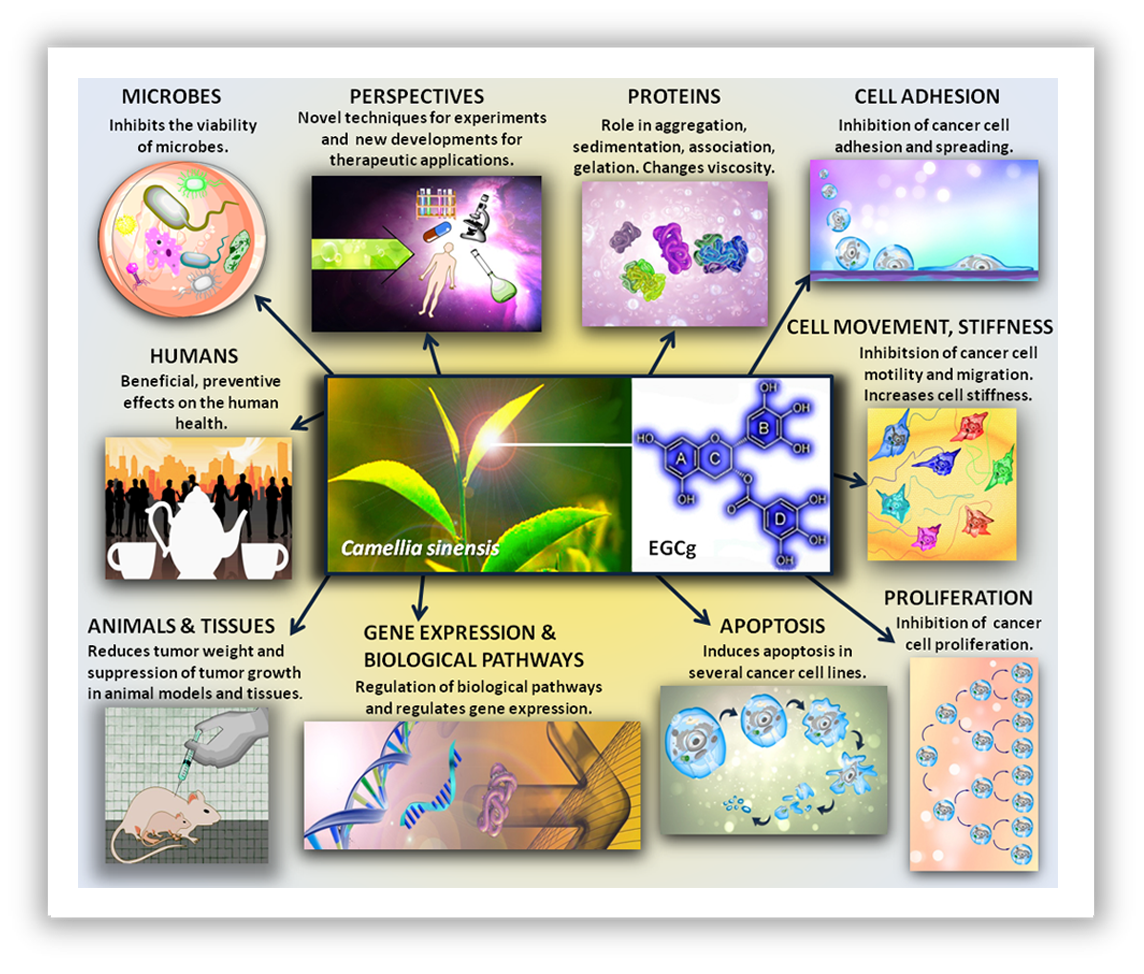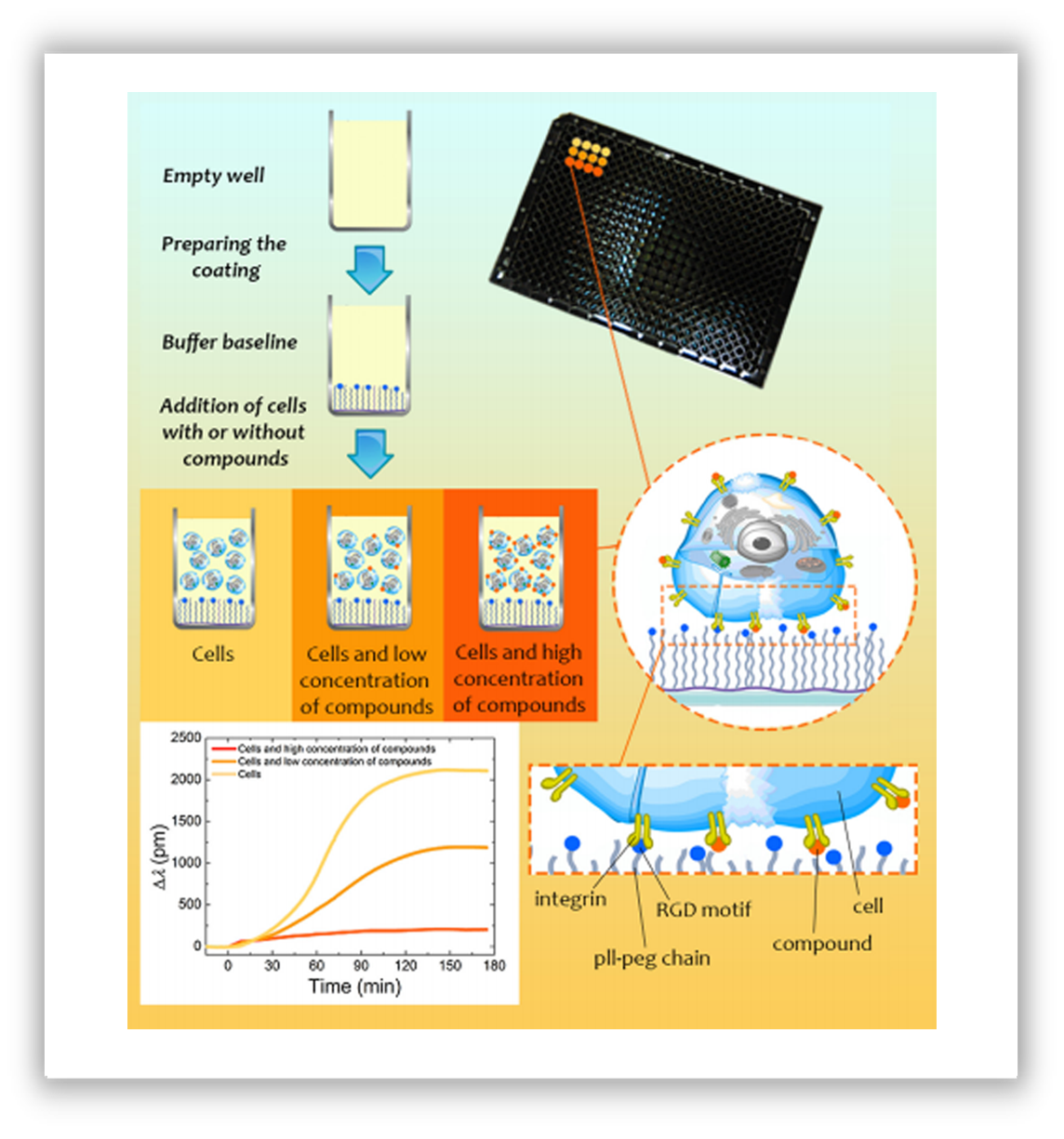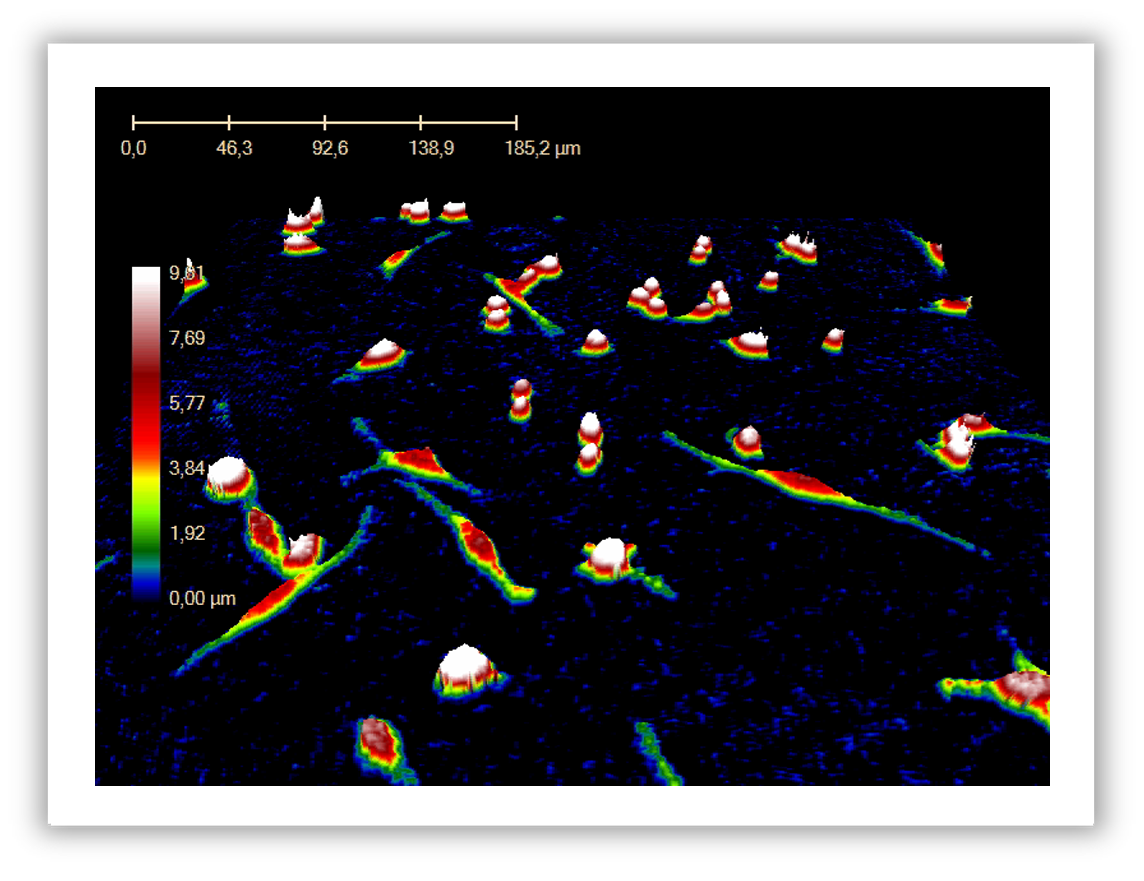Label-free biosensors are capable of monitoring cellular responses to different compounds and stimuli. We have experience in for example B cell stimulation and natural compound (green tea polyphenol) treatment of mammalian cells monitored by label-free techniques.
Collaboration partners: Eötvös Lóránd University, Semmelweis University, Budapest University of Technology and Economics

Diversified effects of green tea polyphenol epigallocatechin gallate (EGCg). Our group focuses on those
experiments which reveal the EGCg's influence on cell adhesion, movement and viability.
experiments which reveal the EGCg's influence on cell adhesion, movement and viability.

Our laboratory tested green tea polyphenol EGCg treated coatings on cancer cell adhesion by label-free
Epic BT biosensor. A 384-well plate used in the experiment is also shown, together with the manipulation
stepsin a typical well (right scheme).Typical experimental curves are plotted (bottom left corner) for RGD
(Arginylglycylaspartic acid) displaying coatingand 500 μg/ml EGCg concentration.
Epic BT biosensor. A 384-well plate used in the experiment is also shown, together with the manipulation
stepsin a typical well (right scheme).Typical experimental curves are plotted (bottom left corner) for RGD
(Arginylglycylaspartic acid) displaying coatingand 500 μg/ml EGCg concentration.

Schematic illustration of the working principle of the measurement of integrin–ligand interactions by detecting cell
adhesion with the Epic BT biosensor. The bottom of the biosensor wells is covered with a synthetic polymer layer
displaying the integrin ligands. Ligand molecules added to the cell suspensions block integrins on the surface of
the adhering cells, therefore weaken the cell adhesion on the ligand displaying sensing surfaces.
adhesion with the Epic BT biosensor. The bottom of the biosensor wells is covered with a synthetic polymer layer
displaying the integrin ligands. Ligand molecules added to the cell suspensions block integrins on the surface of
the adhering cells, therefore weaken the cell adhesion on the ligand displaying sensing surfaces.

Experimental setup to perform real-time measurement of dynamic mass redistribution (DMR) using B-cell
lines (A); and schematic illustration of the principle of DMR detection (B). After baseline reading, the
receptors were ligated with the different antibodies. The shift of resonant wavelength
lines (A); and schematic illustration of the principle of DMR detection (B). After baseline reading, the
receptors were ligated with the different antibodies. The shift of resonant wavelength
relative to the baseline value (wavelength shift) was recorded in picometers.

3D image of cells taken by Holomonitor holographic transmission microscope.
Relevant publications:
Peter et al. Biophysical characteristics of proteins and living cells exposed to the green tea polyphenol epigallocatechin-3-gallate (EGCg): review of recent advances from molecular mechanisms to nanomedicine and clinical trials. European Biophysics Journal, 2017
Peter et al. Green tea polyphenol tailors cell adhesivity of RGD displaying surfaces: multicomponent models monitored optically. Scientific Reports, 2017
Szekacs et al. Receptor specific adhesion assay for the quantification of integrin–ligand interactions in intact cells using a microplate based, label-free optical biosensor. Sensors and Actuators B: Chemical, 2017
Kurucz et al. Label-free optical biosensor for on-line monitoring the integrated response of human B cells upon the engagement of stimulatory and inhibitory immune receptors. Sensors and Actuators B: Chemical, 2017
Farkas et al. Label-free optical biosensor for real-time monitoring the cytotoxicity of xenobiotics: A proof of principle study on glyphosate. Journal of Hazardous Materials, 2018
Peter et al. Green tea polyphenol tailors cell adhesivity of RGD displaying surfaces: multicomponent models monitored optically. Scientific Reports, 2017
Szekacs et al. Receptor specific adhesion assay for the quantification of integrin–ligand interactions in intact cells using a microplate based, label-free optical biosensor. Sensors and Actuators B: Chemical, 2017
Kurucz et al. Label-free optical biosensor for on-line monitoring the integrated response of human B cells upon the engagement of stimulatory and inhibitory immune receptors. Sensors and Actuators B: Chemical, 2017
Farkas et al. Label-free optical biosensor for real-time monitoring the cytotoxicity of xenobiotics: A proof of principle study on glyphosate. Journal of Hazardous Materials, 2018

